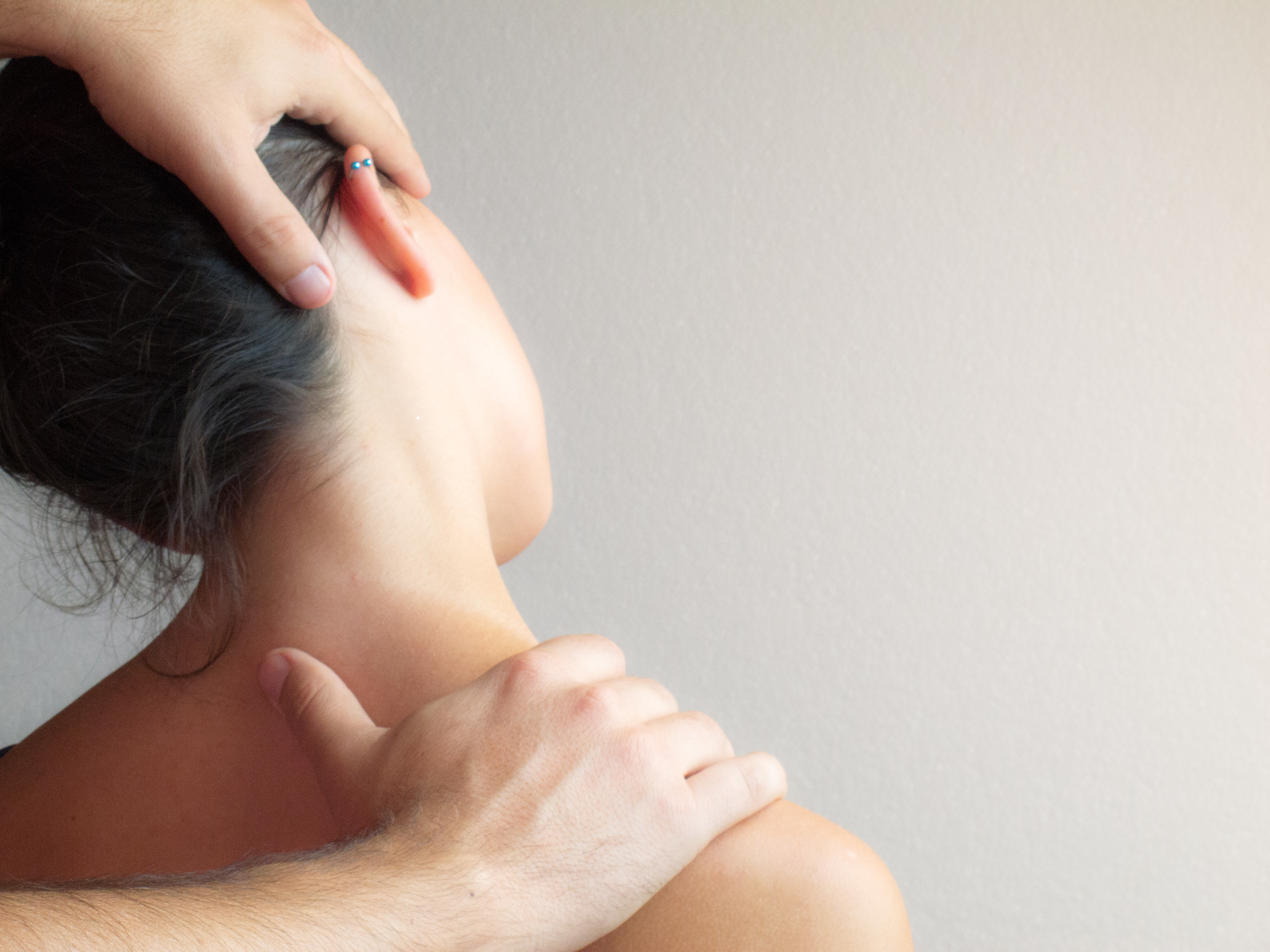by Adam Field, PT
Laura walked into my office and I encouraged her to put her bag and coat on the armchair in the corner. I watched her walk to the chair, bend slightly to drop her bag and coat, saw her wince with pain, then turn the whole top half of her body to look toward me.
“Neck stiff?” I said trying to coax a smile. “You don’t know the half of it. You helped my co-worker Sue so much, I had to come and try,” she said. She then began to recount a long history of limited motion going back to a diagnosis of scoliosis when she was a teenager. This was followed by multiple back surgeries with attempts to straighten the curves in her spine. Laura displayed a long surgical scar running down the entire length of her back.
As I asked Laura about her work and the activities she has difficulty with, I noticed the stiff, rigid way she shook her head and nodded. I asked her to turn to the right and she had barely moved before her shoulders and chest began to follow. Turning to the left wasn’t much better.
I then explained my “whole body” approach to manual physical therapy, and why it made no sense to me to treat neck problems while ignoring the pelvis since they have such a strong effect on one another. Laura told me that she always feels off-balance, and my examination showed that the left half of her pelvis tilted backward, the right forward with creating a difference of one to two inches in the length of her legs. No wonder feeling off balance was the norm for Laura!
Much like a puzzle, our bodies and how they work provide clues to help a physical therapist determine the problem and how to treat it. I began by working at the muscles and fascia (connective fibers beneath the skin) that were the usual suspects in a crooked pelvis. I applied deep tissue techniques to the psoas (muscle on the side of the lumbar region of the vertebral column) and her hip flexors on the right, and to her hamstrings and iliotibial (thick band of fascia) on the side of her left thigh. I then used a friction massage to the tissue along the scar, which Laura said was painful, but subsided as I continued.
Having Laura lie face down on the table, I applied a hot pack to her mid-back while I dug in with more deep tissue, this time to the trigger points in the area between her shoulder blade and spine. I used my elbow, sustained the pressure and asked her to take long breaths, inflating her diaphragm like a balloon. “That hurts a lot but it feels good at the same time,” she said between breaths.
Positioning Laura her on her back, I cradled her head, telling her, “Let your head go like it weighs a thousand pounds.” I asked her to turn to the right as I resisted her, to which she replied, “You’re not letting me!” But that was the idea! When she relaxed, I gently turned her head to the left, to which she exclaimed, “I haven’t turned that far for a long time!”
A final check showed more flexibility in the neck and a straighter pelvis. “The pain is much better. I’m so glad I found you,” she said.
About the Author:
Adam Field is a physical therapist with more than ten years of experience providing one-on-one hands-on manual physical therapy, specializing in craniosacral therapy, myofascial release, and chronic pain. His practice is located at the JCC Benderson Building, 2640 North Forest Road, Getzville, NY 14068. To book an appointment with Adam please call 716-982-8200 or visit www.adamfieldphysicaltherapy.com.











